Kayaking alone for 150 miles from Manhattan Beach to Tijuana ? Who would want to do that? Would you do something like this?
There’s a guy I know who’s going to do it. And at the same time, he’ll be fighting for a cause: It’s called #ChangeYourTuna which involves The Destructive Fishing of Tuna.
I love it when people set goals and achieve them. We should continually be learning, growing and challenging ourselves, right? We should stay active. And we should help others when we can.
In this venture, Andrew wrapped all these things up into one. I admire this.
Andrew feels passionate about Tuna Destruction. It’s a problem which can be fixed if we make better choices on where we buy our tuna.
Our oceans are in danger because of how we buy and eat tuna. I didn’t know there was a problem with the fishing of tuna until he brought it to my attention. Did you?
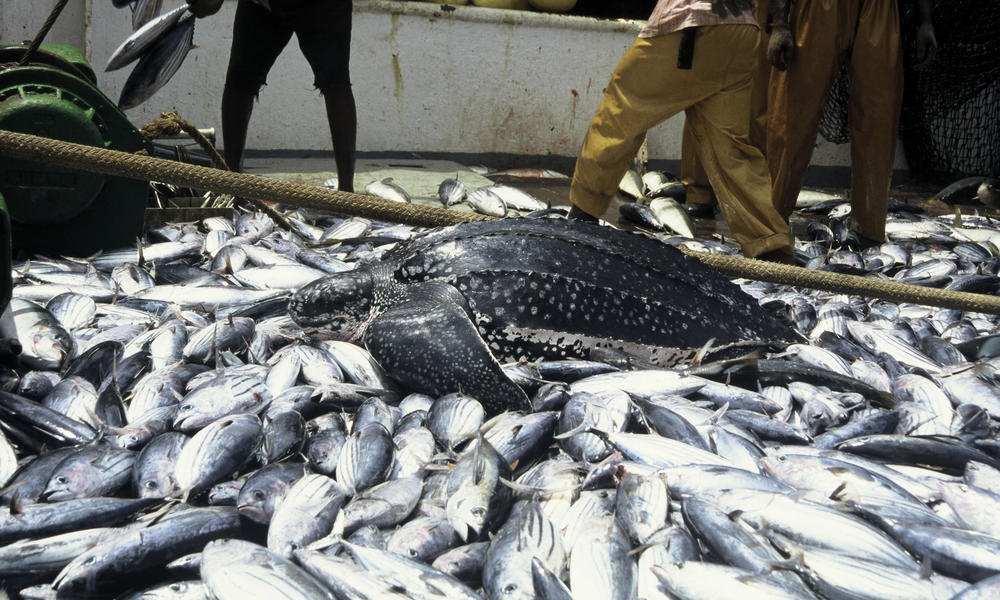
Source: exowatch.com. Leatherback turtle caught up in a French Tuna purse-seine fishery in the Atlantic ocean
We’ll delve further into the Destructive Tuna Fishing issue in a minute.
But first, let’s talk about Andrew’s kayaking expedition.
Meet Andrew Szabo. Our kids go to school together and we are neighbors in Manhattan Beach, Ca.

Andrew has always loved discovering new places.
- At age 14, he took his bike on a 100 mile 3 day bike trip.
- At 16, he hitch-hiked from Hungary to Sweden during his summer.
- He’s crossed the Sahara Desert 15 times in the last 12 years.
On Sunday, September 4th, 2016 at 7:30 am, Andrew plans to kayak alone for 11 days from the shore by his Manhattan Beach home to Tijuana while representing GreenPeace.org and the cause for #ChangeYourTuna.
When he told me this, I was fascinated.
What do you mean, kayak by yourself for 11 days? Why? Where will you sleep? What will you eat? Will you feel like Tom Hanks in Castaway? What if something happens while you’re in the water by yourself? What if you have to go #2??
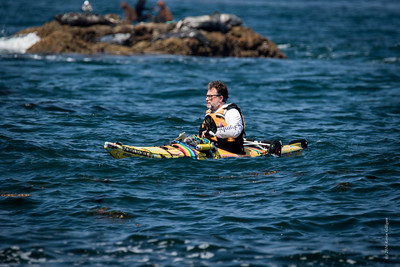
Source: K.A. Gilligan Photography
Andrew will paddle 10 hours a day, traveling southbound 13-16 miles before each stop where he’ll eat and camp in his 1 person tent.
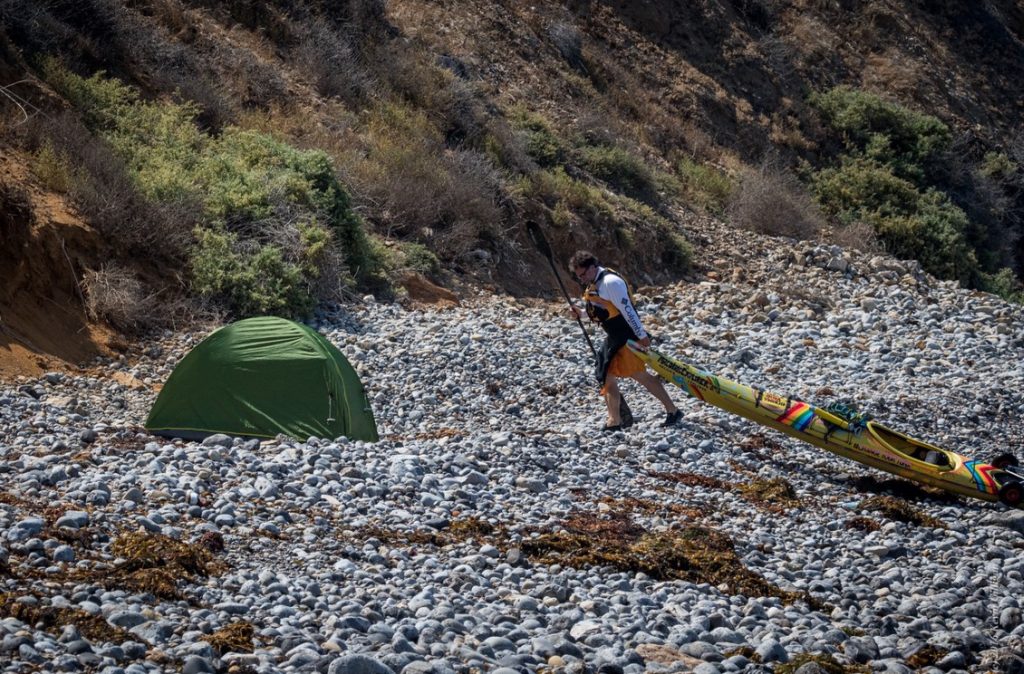
Source: K.A. Gilligan Photography
He will carry with him (in his kayak) the following:
- 3 days worth of dehydrated meals and water
- personal flotation device, marine radio (with man overboard function that signals distress), camera, solar charger, GPS tracker
- sleeping bag, tent, small inflatable mattress
- spray skirt- goes around the boat’s cockpit to keep water out
- 2 outfits- one he wears and one dry set
- cell phone
- sunscreen
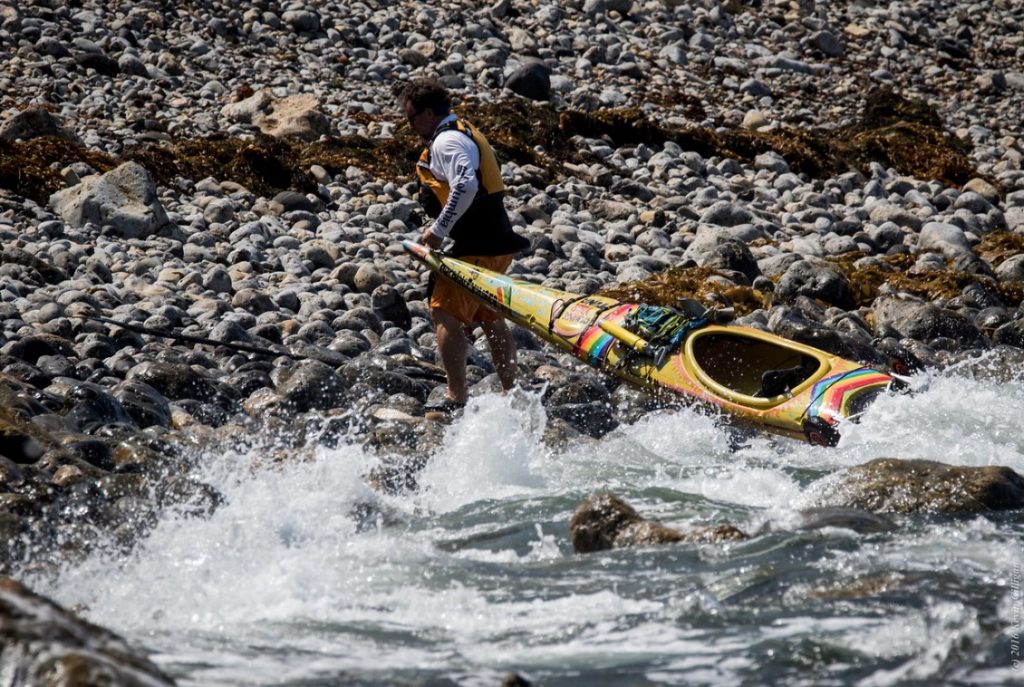
Source: K.A. Gilligan Photography
He will have cell service along his route since he will be only 1 mile offshore throughout his journey. At each stop, Andrew will be eating breakfast and dinner at local shops. He will camp outdoors every night except day 5, where his wife, Erica will meet him and they’ll stay in a hotel room and he’ll get his 1 shower during his trip.
Andrew plans on visiting with friends in the evenings during his stops. Some volunteers from Greenpeace will join him on certain legs of his journey.
As I got more details about his trip, I thought, fun! Except for the paddling for 10 hours part.
Read about his journey in planning for his kayaking trip on his blog, Keep the Coast on Your Left.
Now, let’s talk more about his Cause #ChangeYourTuna
Destructive Fishing of Tuna- the Unethical Practice of Tuna Fishing
Knowledge is power. We need to know the tuna industry has many practices which harm sea life and the marine environment!
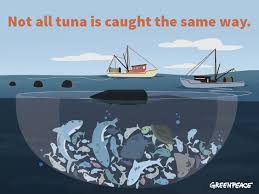 Due to unethical fishing practices, there is much marine life unintentionally caught and often killed when fishing (like sharks, turtles and juvenile tuna).
Due to unethical fishing practices, there is much marine life unintentionally caught and often killed when fishing (like sharks, turtles and juvenile tuna).
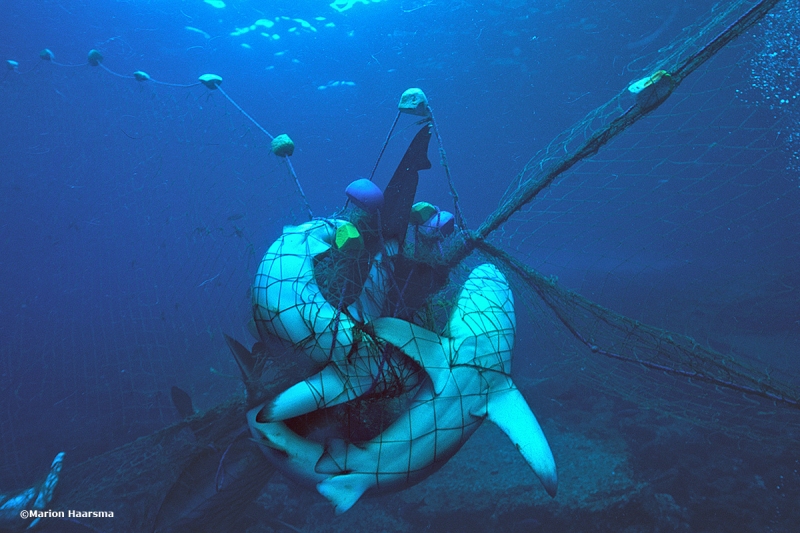 In addition, more tuna are fished from the sea than born which has made tuna populations over-fished. Did you know Blue Fins are endangered? Big Eyes are “Vulnerable”(just below endangered) and Albacore/Yellow Tail are “Near Threatened.”
In addition, more tuna are fished from the sea than born which has made tuna populations over-fished. Did you know Blue Fins are endangered? Big Eyes are “Vulnerable”(just below endangered) and Albacore/Yellow Tail are “Near Threatened.”
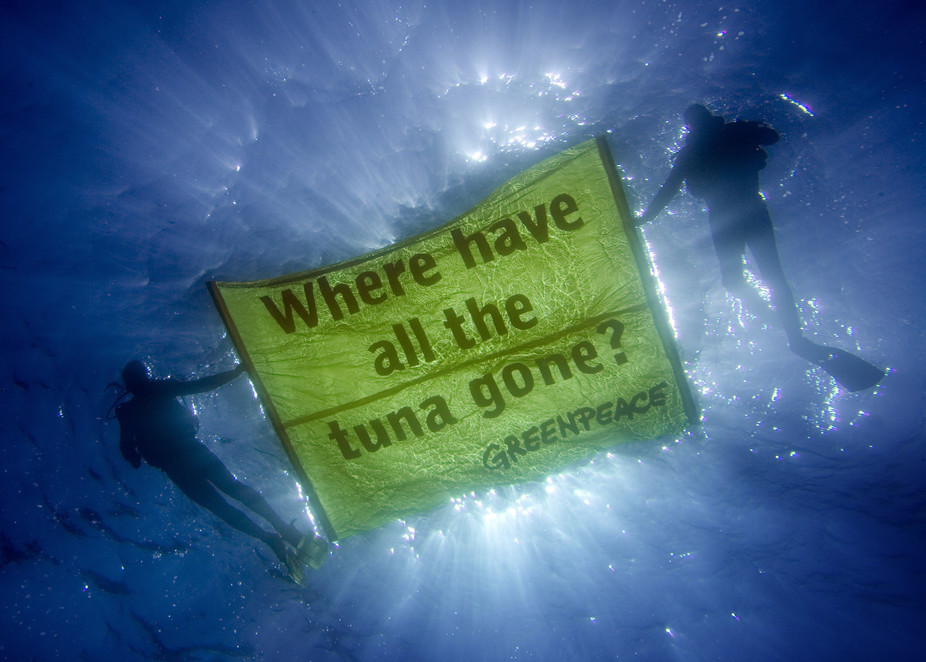
source: the conversation.com.
Advances in technology have caused fishing fleets to be able to produce as much tuna in two days as some countries can take in a year. Large canned tuna companies are utilizing destructive methods of fishing in order to fish larger schools of tuna in less time = more revenue.
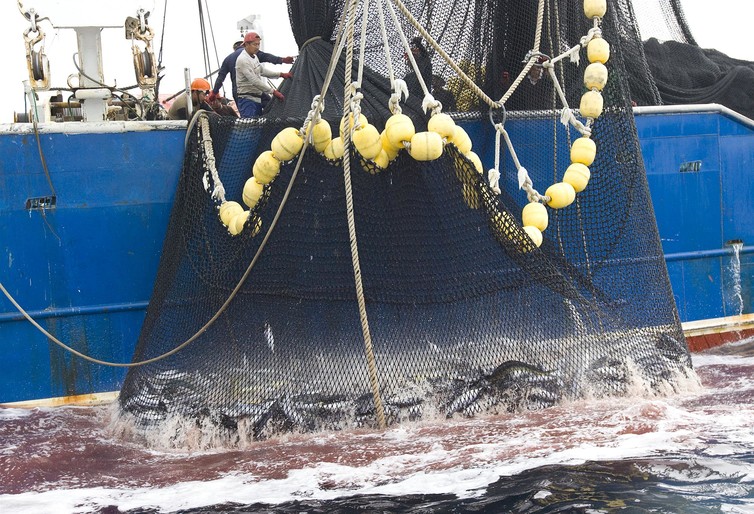
Also, the Fishing industry needs to ban the transfer of fish at sea and insist boats come into port, where the catch can be checked and verified to prevent pirate fishing fleets who steal from various countries’ waters. Often they transfer their illegal catch far out at sea into “legal” processing boats, effectively laundering their stolen fish and making it almost impossible to trace.
Click here to read more about dangerous Tuna Fishing Practices.
WHAT CAN WE DO?
WE AS CONSUMERS can make an impact by NOT BUYING THESE BRANDS OF TUNA.
I will admit, Bumble Bee White Albacore Tuna was my tuna of choice until learning about this issue.
 DON’T BUY ANY OF THESE BRANDS
DON’T BUY ANY OF THESE BRANDS
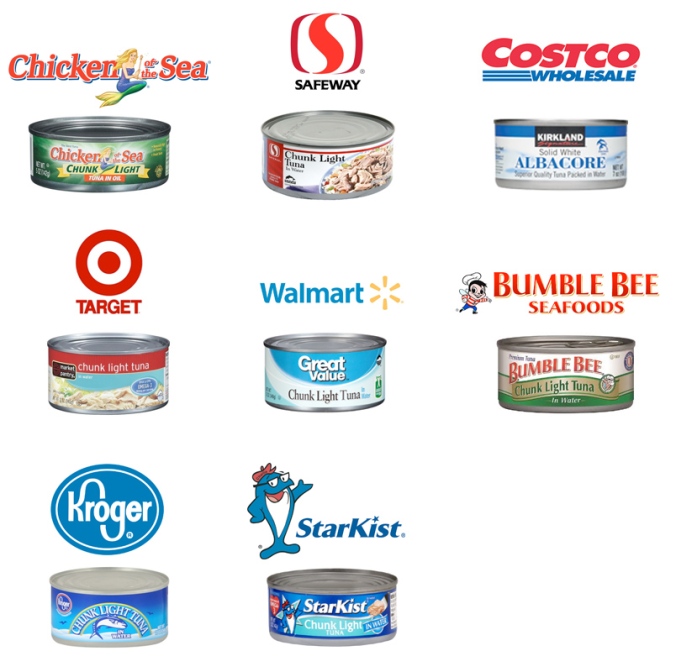
THESE ARE SAFE TO BUY IN THE US
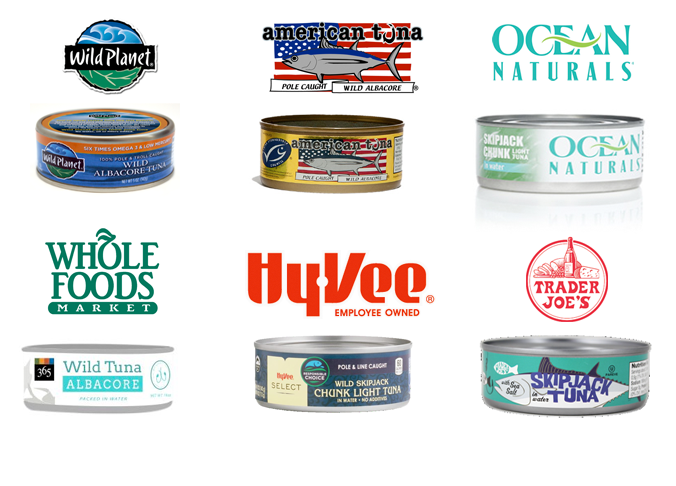
Learn how to read your tuna label and only buy tuna from a reliable, ethical and sustainable tuna company. Decode the label!
WHAT ELSE CAN WE DO?
- Don’t Feed Your Cat Tuna! Tuna is not only harmful to their diet, but also contributes to over-fishing and the depletion of our oceans. The largest cat food manufacturers, Whiskas, Iams and Dine regularly add destructively fished tuna to their cat food.
- Support Ocean Sanctuaries. Ocean sanctuaries will protect and heal our oceans. Sanctuary means don’t take, don’t break, don’t pollute and let the ocean heal. Fish and wildlife populations can grow and come back to life again. Fishermen, politicians, businessmen and scientists all agree that these sanctuaries are necessary for our oceans.
- SIGN THE INTERNATIONAL OCEAN SANCTUARY PETITION!
- Learn Your Tuna Labels Click Here for label vocabulary.
So what do you think? Will you stop buying Chicken of the Sea and instead, buy safe brands of tuna from Whole Foods or Trader Joe’s? Easy, right? And how can we not, after learning the facts?
I’m looking forward to hearing about how Andrew’s trip goes. I bet he sees dolphins every day and has whale sightings! I’m also curious to find out if he has hallucinations after being in the ocean for so many hours like in “Life of Pi.” And I hope those baby sharks hanging out in our neighborhood are not on his route! I’m sure he’s looked into that.
Thank you, Andrew, for bringing this issue to my attention. After reading more about it, I see it’s a big problem and I understand your passion for this important cause.
I hope everyone who reads this not only 1) stops buying bad tuna, but also reminds themselves to 2) continually challenge themselves, 3) explore and create new adventures and 4) help when we can.
If you want to join Andrew for any length of his trip with a kayak, canoe, SUP or paddle board, he would love to see you support his cause! Visit his site ArcoirisExplorer.org for his route and to learn more about his trip.
#ChangeYourTuna!

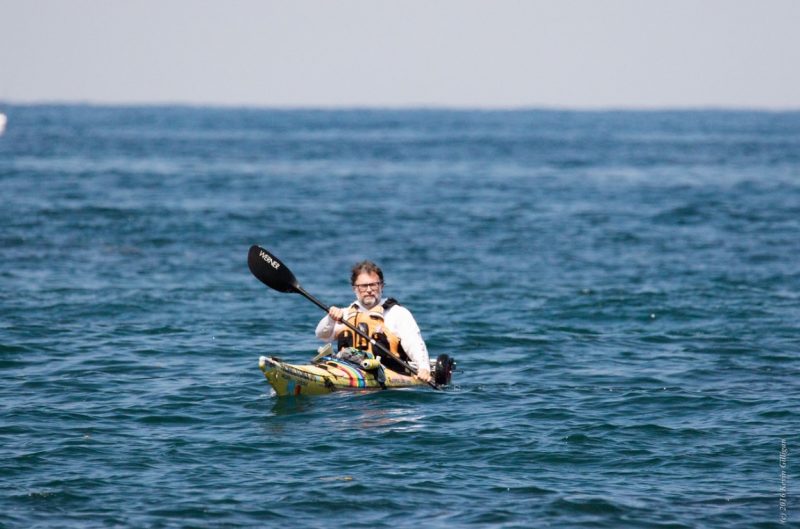



I’m so inspired by this. Thanks for sharing Andrew’s story and his cause. I stopped buying my cat tuna a couple of years ago for this very reason (plus, I heard it wasn’t the best thing for him). And I recently heard the problem is so bad that pretty soon there won’t be any tuna left to fish, which goes right along with what you said about them fishing more than are being born. I grew up on tuna, so I get the appeal, but come on! Thanks for spreading the word.
Wow, you knew about this issue, Meredith? I am so glad to have learned about it. Makes me think of all the causes we don’t know about. One day at a time – I’m so happy I can help spread the word! Thanks for reading!
I 100% support Andrew’s cause. Thank you Jen for publishing this food for thought!
Thanks for always supporting, P!
Protecting our fisheries has always been something we have been concerned about. As avid fishermen, we are keenly aware of the destruction of our oceans from not only unsustainable fishing practices but also to environmental pollution. By voting with our dollars, big business will change much faster than waiting for legislation. A great app I have used for some time and often recommend to my patients is Seafood Watch from Monterrey Bay Aquarium. It is a detailed guide to sustainable seafood and how to make informed choices in seafood selections. Thanks for posting this article and thank you to Andrew for making some waves. Best of luck!
Michelle, such a thoughtful comment. Thank you! Will have to check out the Seafood Watch App!
This was a pretty interesting read! I will definitely try to buy cans of tuna that more helpful for the tuna environment. At the moment though I am currently not eating tuna, long story. But the kayaking expedition sounds amazing!
Awesome, Chasa. Thanks so much for reading and not buying the bad tuna!